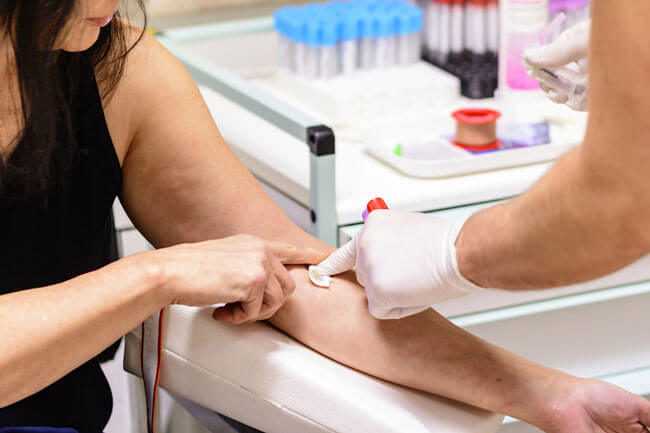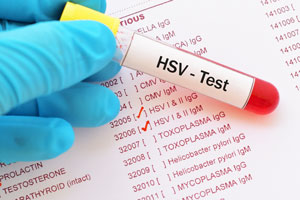Herpes simplex virus 1 and 2 (or human herpesvirus 1 and 2 or HSV-1 and HSV-2) are members of the herpesvirus family called Herpesviridae, which is known for its highly infectious properties toward humans. Both types of herpes can manifest in the form of sores around the throat, mouth, lips, inner thighs, scrotum, cervix, vagina, anus, penis, and rarely around the eyes.
Herpes is spread very easily from skin-to-skin contact with areas that are already infected, most commonly during oral, vaginal, and anal sex, as well as kissing. Note that herpes can be transmitted even if you don’t exhibit any visible symptoms, which is the most insidious part of this STD.
There are numerous options for herpes testing and the right test depends on whether or not you’re exhibiting any symptoms.

Testing Solutions For Herpes
If the symptoms of herpes already appeared, one of the possible courses of action is doing a culture test. The swab is taken from the sore within 48 hours after the appearance of the lesion. The final report is usually generated within one week. The biggest advantage of this method is its high accuracy in providing positive results. If your viral culture test comes back positive, you can be sure the virus is in your system.
 The physician can also “type” the culture to determine the exact cause of the infection (HSV-1 or HSV-2). The biggest disadvantages of this method, however, lies in its high percentage of false negatives. The test requires an active virus, so if the lesion already began to heal, there might not be enough viral activity for an accurate culture.
The physician can also “type” the culture to determine the exact cause of the infection (HSV-1 or HSV-2). The biggest disadvantages of this method, however, lies in its high percentage of false negatives. The test requires an active virus, so if the lesion already began to heal, there might not be enough viral activity for an accurate culture.
The infected area can also be swabbed in order to run a DNA test named Nucleic Acid Amplification Test (NAAT). NAAT is fast and reliable, it can determine whether the patient has HSV-1 or HSV-2, and its percentage of false negatives is considerably lower. The most preferred NAAT testing method is the so-called PCR or polymerase chain reaction. The test is designed to detect traces of the viral DNA and the results are usually ready within 24 hours. Needless to say, this is a much better and more reliable testing method than doing a viral culture.
If you haven’t experienced any symptoms but still have concerns about potential exposure, you can do a blood test. Note that blood tests don’t actually detect HSV, but antibodies created by your immune system to fight off the disease.
Our immune system reacts to herpes by developing antibodies called IgG (Immunoglobulin G) and IgM (Immunoglobulin M). IgM is the first antibody to appear after a herpes infection, but it can also disappear later on. It is usually detectable 7-10 days after the infection. IgG antibodies will be created later on, but they remain in the blood for life. Therefore, IgG tests are much more reliable and accurate than IgM options.
IgG antibodies can also be used to determine whether the patient has HSV-1 or HSV-2. Although type-specific tests can differentiate between HSV-1 and HSV-2, they cannot tell you if your herpes infection is oral or genital.
In the past, HSV-1 was also known as “cold sores” whereas HSV-2 was known as “genital herpes.” The lines are blurred nowadays as many patients exhibit HSV-1 in the genital area. This is why IgM and IgG tests can only tell you that you have an infection, but not pinpoint to its exact location. In order to determine that, you’ll have to monitor the symptoms once they appear.
Since IgM tests cannot differentiate between antibodies created to fight HSV-1 and HSV-2, they can also show false positives for genital herpes (the bad kind). This is very important to know since most of the adult population already has antibodies for HSV-1 and can, therefore, easily get a false positive for HSV-2.
